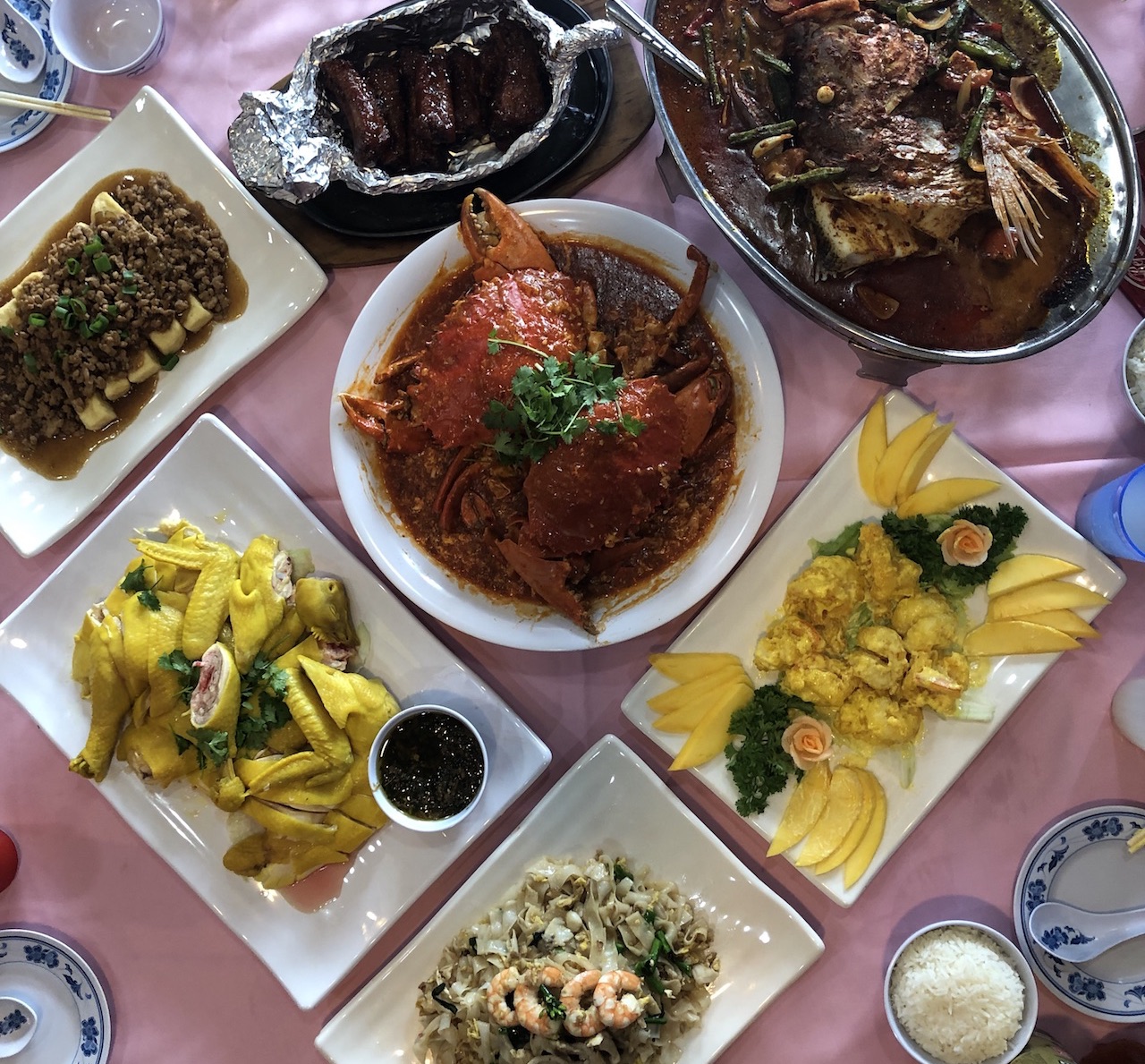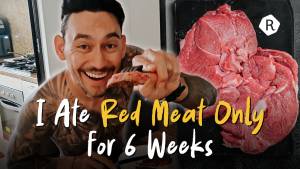I’m no diehard foodie, but here are two statements of fact.
One, creating the perfect wok hei is akin to finding true love—it’s elusive, but once you get it, you get it. (Literally translated into ‘breath of a wok’, it is the singular ingredient required for the best zi char dish, found in that smoky, flavour-infused oomph after devouring a spoonful of hor fun, each rice noodle slightly charred around the edges.)
Two, the quickest way to any Singaporean’s heart and wallet is through their stomach.
Thus, capturing the essence of wok hei in a bottle would be akin to both figuring out the formula for true love and becoming a millionaire. And the most effective way of landing my Prince Charming or Sixth Avenue property might be to actually witness an experienced zi char chef, 45-year-old Chef Than Chee Wai, replicate the exquisite taste of wok hei across his zi char dishes.
Specifically, I follow my stomach to his kitchen at De Yun Seafood, a tenant under Kim San Leng, along Bukit Timah Road.
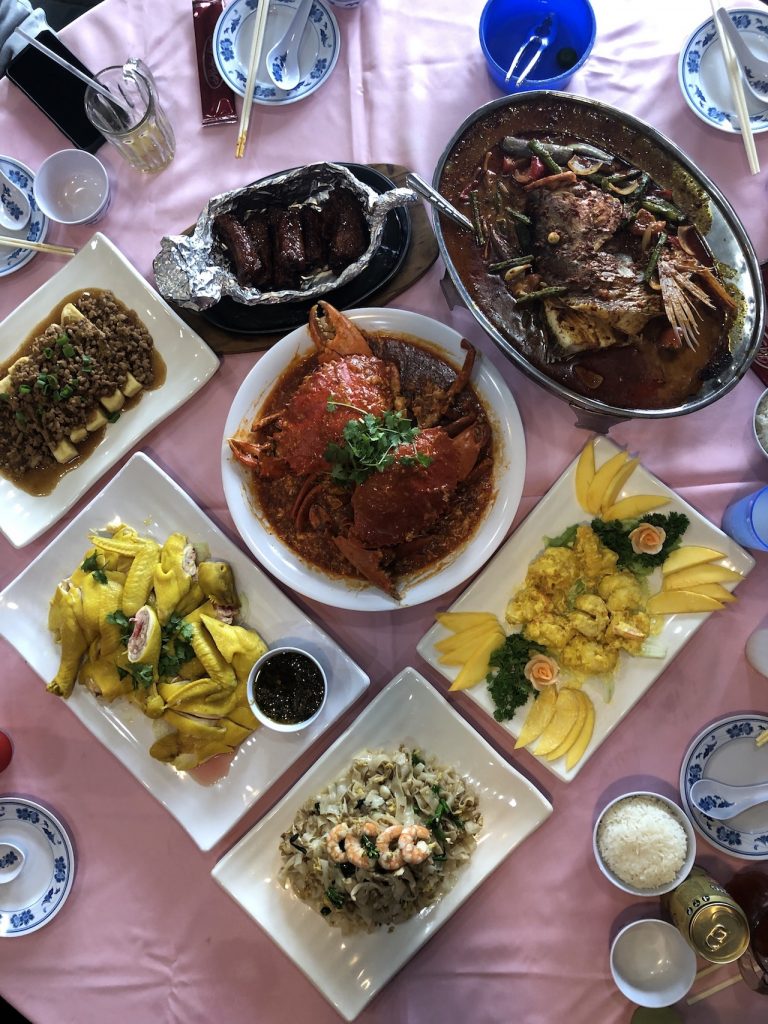
These are sufficient, however. Prior research tells me wok hei is derived by adding cold cooking oil to a piercingly hot wok before one adds the raw ingredients. This way, the oil won’t chemically decompose due to the high temperatures.
Between dishes, Chef Than hastily washes the wok with two or three huge scoops of clean water. The charred bits remain, possibly adding flavour to the next dish.
Occasionally, the fire bursts from the burner in a blinding dash of orange, allowing him to toss the flames into his wok. The flames dance across the ingredients for a split second, before he places the wok back onto the stove, giving everything one final stir. Then, he plates each dish, ready to be sampled by customers who will invariably compliment him.
Several websites may describe wok hei as the quintessential harmony of art and science, but Chef Than’s demonstration feels remarkably … ordinary.
When I ask how he knows when optimum wok hei has been achieved, he quips, “You just know lor. Need to know when to flip the food.”
That said, I once googled how to boil pasta, so who am I to judge?
I suppose the proof will be in the pudding.

Call me conservative, but beginning a meal with this as the first dish is like going to third base when you haven’t even held hands. (Some would argue that is exactly how love works today though.)
The curry is tangy enough that I can submerge my rice in it without setting my mouth on fire.
Yet, I can’t quite taste the wok hei. Perhaps the spice drowns out the flavour, or perhaps this dish is just too ‘wet’.
After all, according to the Michelin Guide, wok hei is derived “when individual food pieces are tossed about in this inferno, the searing heat blasts away excess moisture and dries out the surface of the food for maximum caramelisation”. So, one way to ensure ideal wok hei is to be precise with the water present in the ingredients: too much H2O and the food might end up soggy, but too little and it dries out or burns.
The curry is good, but not great; satisfactory, but not satisfying. I leave stomach space for the X amount of dishes I’m going to feast on, hoping the second dish’s wok hei completely floors me.
Spoiler alert: it does.

Yet as I pry apart the delicate tofu skin, it spills onto my spoon. I shovel a spoonful of tofu into my mouth with the minced pork. The latter boasts a hint of the charred aroma I’m looking for—so subtle and fleeting that you might miss it if you weren’t paying attention to its flavour.
Satisfied with the massive improvement from the curry, I look for something to cleanse my palate and settle on the sha jiang chicken (sand ginger chicken), which I’ve never tried in my life. Since it’s my first time eating the dish, I decide there’s no better way than to eat it with my bare hands.
I’m no chicken connoisseur, but even I know there’s no wok hei in steamed chicken. (Wok hei, as the name implies, is only present in food that’s stir-fried.) Still, the fresh chicken pairs well with its accompanying sauce containing ginger and sand ginger.
Honestly, I wonder as I lick my fingers, is there any better compliment for a chef than to see their customers indulge in messy eating simply because they love their food?
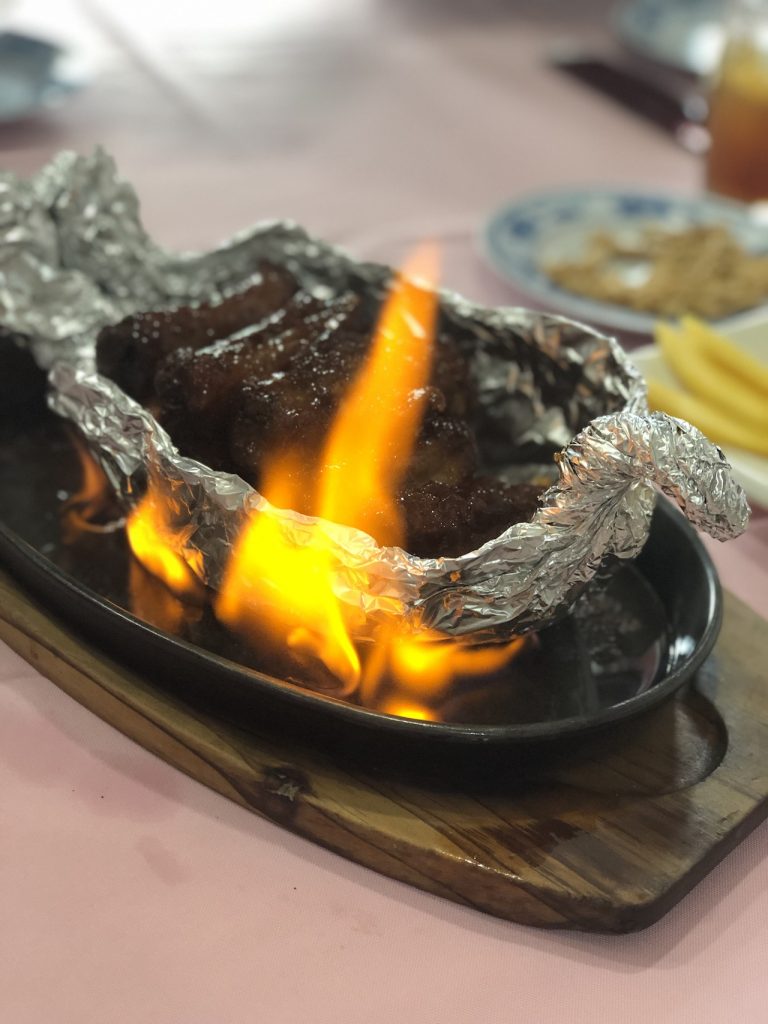
A better compliment would resemble unintelligible grunts of pleasure, which I release as I poke and prod a couple of battered prawns with mango. Juicy prawns aside, I’ve never tasted batter so soft that it crumbles in my mouth, like a pastry.
Like the chicken, the wok hei isn’t quite apparent in these prawns either. But I remember Chef Than tossing the prawns in batter before throwing them into the wok somewhere at the start. So I raise my baseless assumption that wok hei only works for dishes that you cook towards the end, because the wok would’ve been cloaked with the flavouring from previous dishes.
“No, it’s not really the case that the first dish doesn’t have wok hei and the last dish has. It’s about how you cook it,” he corrects me.
“I fry for about one minute. Others do half a minute. So there’s no same feeling. Must see the vegetable and meat itself, whether it’s cooked already.”
Chef Than brings up a sentiment he returns to throughout our conversation: “feeling”. While I get it, I refuse to settle for an answer that doesn’t encompass at least an iota of science and logic. After all, if it’s possible to repeatedly create wok hei successfully, surely there is a method to the madness.
In wok hei as in love, experience does matter. Having been a chef for about 20 years means something so elusive has now become second nature: Chef Than knows what to look out for, what to avoid, and how to create the exact environment for wok hei.
“Wok hei is a special thing. Not every chef knows how to do it purposely. Some do it on accident. Younger chefs five to six years younger might not have the flavouring. But when I do it, can. No problem,” he says, before offering me a plate of smoked pork ribs.
I graze my fork against the rib and the meat falls off the bone effortlessly—the sign of a rib done well. I forget I’m actually looking out for the taste of wok hei.
But it’s there—oh it’s there—merely masked by the surprisingly tender meat.
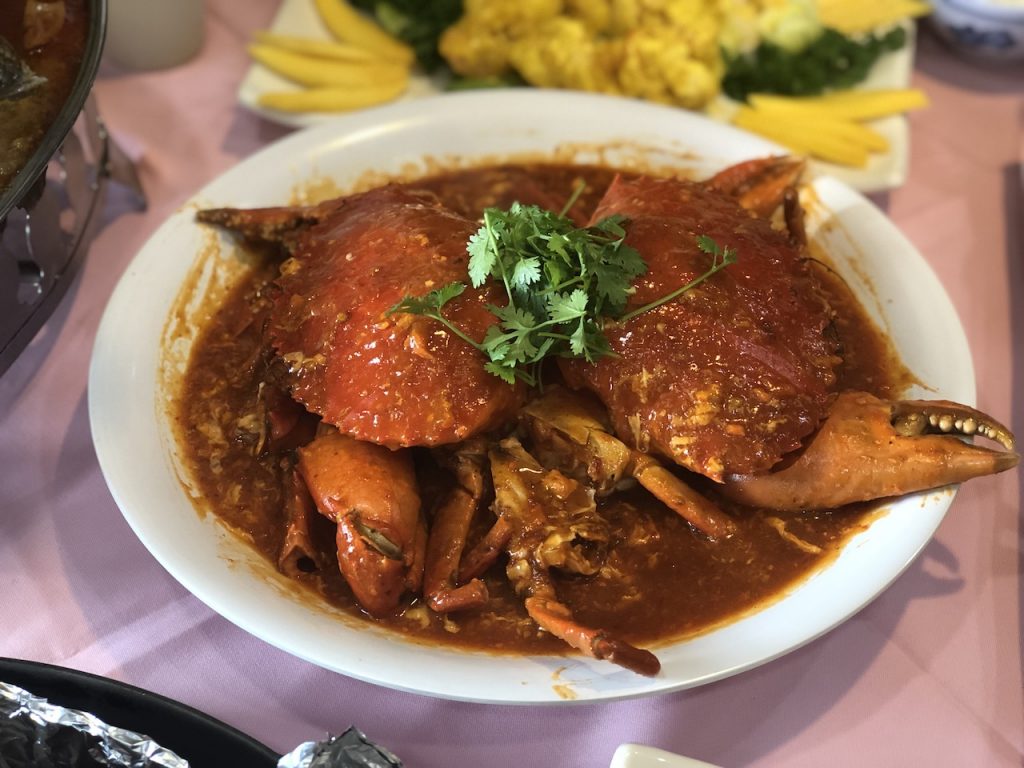

Today, chilli crab is put to the test.
Though I’ve always found chilli crab inconvenient and messy, the sauce is the star. The wok hei is evident, but not overpowering, which convinces me to pull a claw from the overflowing plate and dig in.
Afterwards, I tear into the accompanying fried mantou. Unlike the starchy variety I’m used to in many other restaurants, this falls apart between my fingers. The bread is unusually soft, and soaks up the sauce from the chilli crab efficiently and effectively.
With every mouthful of sheer bliss, I plan my return just to buy a whole box of fried mantous to devour over the week in one sitting.
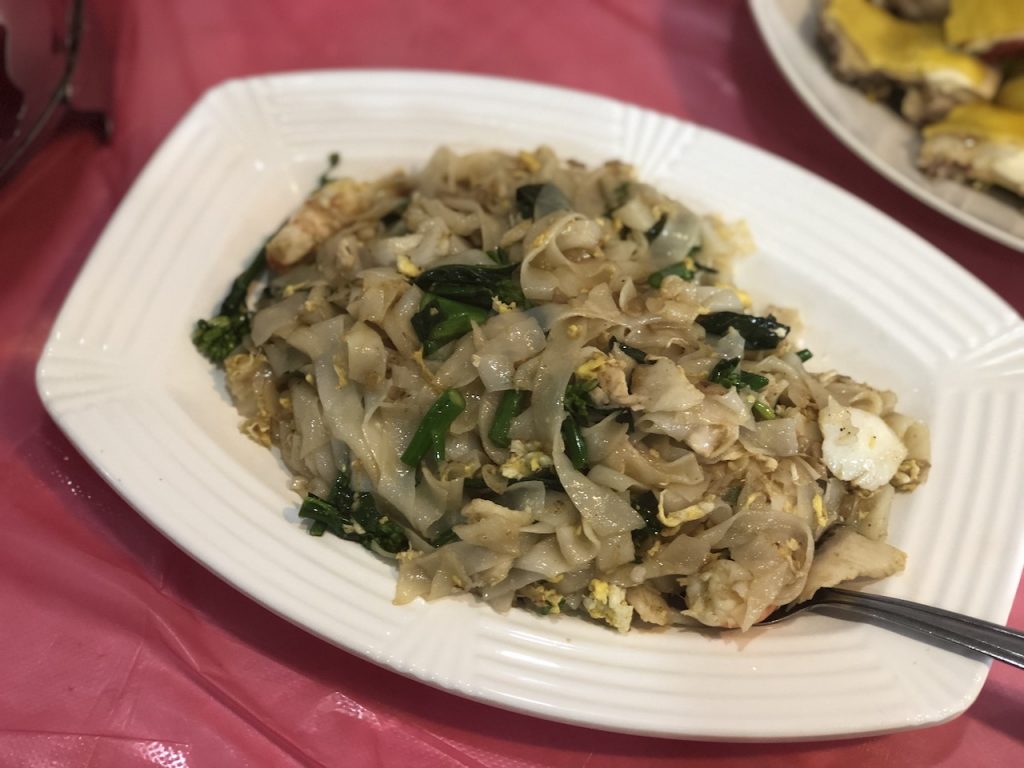
This is how it’s done. After I slurp up my first rice noodle, I am momentarily lost for words. I’ve never had hor fun that rendered me speechless in a good way.
“The difference between having wok hei and not is very stark. Without wok hei, it’s not as nice. Many people who stir-fry do not get the same flavour,” says Chef Than.
“The meat doesn’t have the flavouring originally. Put on the metal.”
Remember that I am hopeless in the kitchen, so it takes me time to understand what he’s getting at: the patina of a seasoned wok is made up of polymerised fats, which get deeper and more fragrant with every use. This then adds to the wok hei aroma during the cooking process.
It appears even the most experienced chefs have difficulty describing the science behind wok hei. Judging by Chef Than, habit becomes instinct; the more experience one has, the more likely they are to be vague with their answers.
After all, Chef Than’s responses haven’t told me the amount of sear required for the wok, the optimum height of the fire, or the desired degree of caramelisation necessary to create wok hei, so that a diner returns countless times because there’s just ‘something’ about the zi char.
But, after devouring the dishes he’s painstakingly prepared for me, I’ve decided his answers are fair. You might not know what ingredients are used in the zi char dish, but the ideal wok hei ensures the dish falls smack in the middle between insipid and inspired. It should not make you want to gulp down a well of water post-meal, but neither should it be utterly bland.
Most importantly, wok hei is about feeling and intuition. All you’d know is the final dish would taste damn good.
Now, ask someone how they know they’ve found The One.
“You just know,” they’ll say with a smile, echoing Chef Than’s answer to creating perfect wok hei.
“Experience. Go by feeling.”
Have you created the perfect wok hei? Let us be the judge: community@ricemedia.co.

